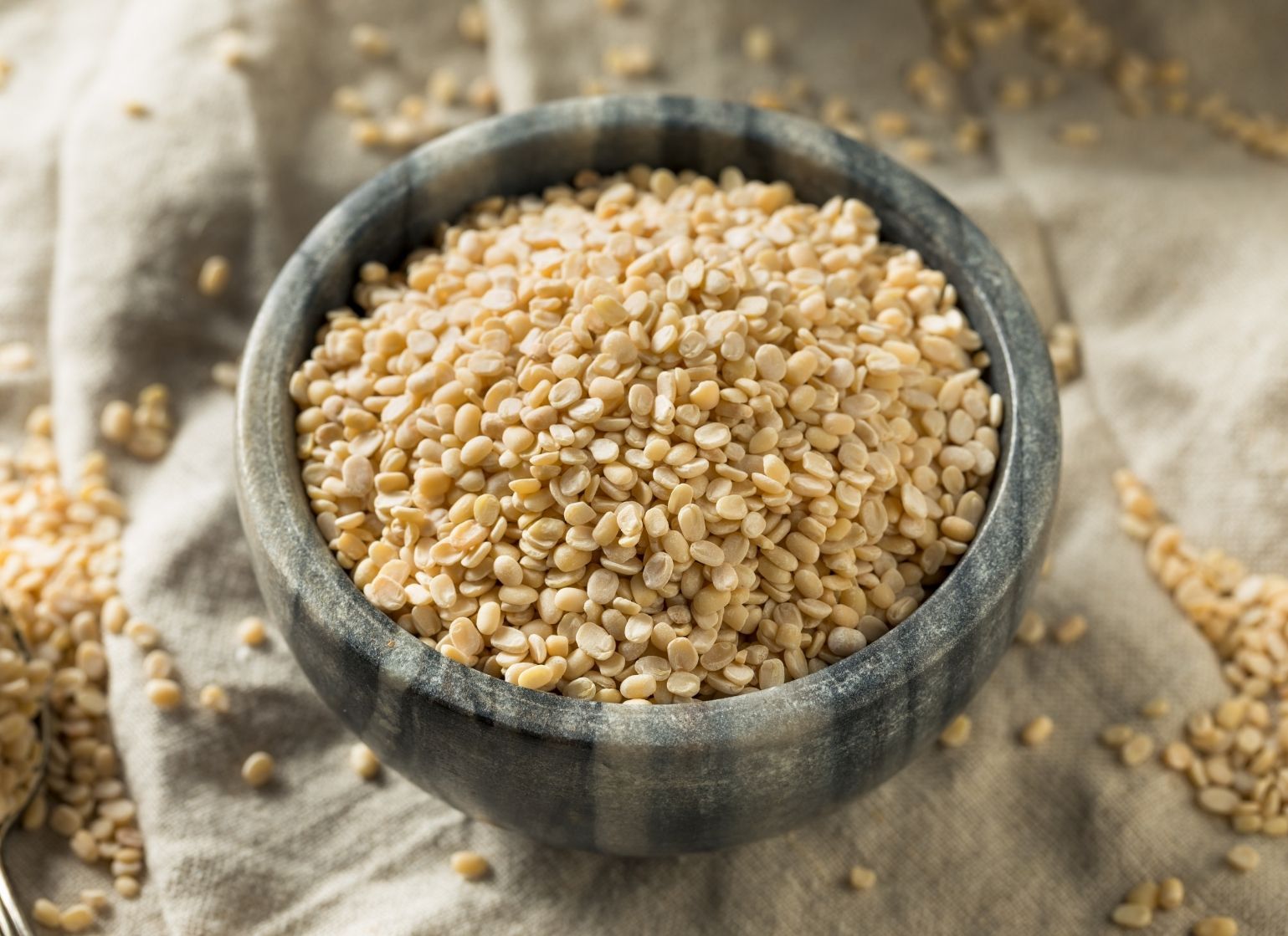
Urad beans, also known as black gram or urad dal, are tiny powerhouses of nutrition and flavor. Originating from India, these beans have been a staple in South Asian cuisine for centuries. Rich in protein, fiber, and essential minerals, urad beans are not just tasty but also incredibly healthy. They play a crucial role in dishes like dal makhani and dosa batter. Ever wondered why these beans are so popular? Their versatility in both savory and sweet dishes makes them a favorite among chefs and home cooks alike. Curious about their benefits? From boosting digestion to enhancing heart health, urad beans are a must-have in your pantry. Let's dive into 20 fascinating facts about this humble yet mighty legume.
Key Takeaways:
- Urad bean, also known as black gram, is a versatile and nutritious legume with a rich history dating back over 4,000 years in India. It's packed with protein, fiber, and essential vitamins, making it a great addition to a healthy diet.
- Not only is urad bean delicious in dishes like dal makhani and idli, but it also offers numerous health benefits, including boosting energy, aiding digestion, and supporting heart and bone health. Its drought-resistant nature and ability to fix nitrogen make it an eco-friendly and sustainable crop.
What is Urad Bean?
Urad bean, also known as black gram or Vigna mungo, is a popular legume in South Asian cuisine. It has a rich history and numerous health benefits. Let's dive into some fascinating facts about this versatile bean.
-
Ancient Origins: Urad bean has been cultivated in India for over 4,000 years. Its ancient roots make it one of the oldest legumes known to humanity.
-
Nutrient Powerhouse: Packed with protein, fiber, and essential vitamins, urad bean is a nutritional powerhouse. It provides a significant amount of iron, calcium, and magnesium.
-
Versatile Ingredient: This bean is used in various dishes, from soups and stews to desserts. In India, it's a key ingredient in dal makhani, idli, and dosa.
-
Black and White Varieties: Urad beans come in two main varieties: black and white. The black variety has a black seed coat, while the white variety is dehulled.
-
Rich in Protein: Urad bean is an excellent source of plant-based protein, making it a staple in vegetarian and vegan diets.
Health Benefits of Urad Bean
Urad bean isn't just tasty; it's also incredibly good for you. Here are some health benefits you might not know about.
-
Boosts Energy: The high iron content in urad bean helps increase energy levels by improving oxygen transport in the blood.
-
Aids Digestion: Rich in dietary fiber, urad bean promotes healthy digestion and prevents constipation.
-
Heart Health: The magnesium and potassium in urad bean help regulate blood pressure and support heart health.
-
Bone Strength: Calcium and phosphorus in urad bean contribute to strong bones and teeth.
-
Improves Skin Health: The vitamins and minerals in urad bean can improve skin health, making it look radiant and youthful.
Culinary Uses of Urad Bean
Urad bean's versatility in the kitchen is unmatched. Here are some ways it can be used in cooking.
-
Dal Makhani: A creamy, rich lentil dish made with black urad beans, butter, and cream. It's a staple in North Indian cuisine.
-
Idli and Dosa: Fermented batter made from urad bean and rice is used to make these popular South Indian breakfast items.
-
Papadum: Thin, crispy crackers made from urad bean flour, often served as an appetizer or snack.
-
Vada: Deep-fried savory doughnuts made from urad bean batter, commonly enjoyed with chutney and sambar.
-
Desserts: In some cultures, urad bean is used to make sweet dishes like urad dal halwa, a rich and flavorful dessert.
Agricultural Facts About Urad Bean
Growing urad bean is an interesting process with unique agricultural aspects. Here are some facts about its cultivation.
-
Drought-Resistant: Urad bean is highly drought-resistant, making it suitable for cultivation in arid and semi-arid regions.
-
Nitrogen Fixation: Like other legumes, urad bean has the ability to fix nitrogen in the soil, improving soil fertility and reducing the need for chemical fertilizers.
-
Short Growing Season: Urad bean has a relatively short growing season, typically maturing in 70-90 days, which allows for multiple harvests in a year.
-
Intercropping: Farmers often grow urad bean alongside other crops like millet, sorghum, and maize, which helps maximize land use and improve soil health.
-
Pest Resistance: Urad bean is naturally resistant to many pests and diseases, reducing the need for chemical pesticides and making it an eco-friendly crop.
Final Thoughts on Urad Beans
Urad beans pack a punch when it comes to nutrition and versatility. These tiny legumes are rich in protein, fiber, and essential minerals like iron and magnesium. They play a crucial role in many traditional dishes, especially in Indian cuisine. From dals to dosas, urad beans are a staple ingredient that adds both flavor and health benefits.
Beyond their culinary uses, urad beans also contribute to soil health by fixing nitrogen, making them a valuable crop for sustainable farming. Whether you're looking to boost your diet with plant-based protein or explore new recipes, urad beans are a fantastic choice.
So, next time you're at the grocery store, consider picking up some urad beans. Your taste buds and your body will thank you.
Frequently Asked Questions
Was this page helpful?
Our commitment to delivering trustworthy and engaging content is at the heart of what we do. Each fact on our site is contributed by real users like you, bringing a wealth of diverse insights and information. To ensure the highest standards of accuracy and reliability, our dedicated editors meticulously review each submission. This process guarantees that the facts we share are not only fascinating but also credible. Trust in our commitment to quality and authenticity as you explore and learn with us.


